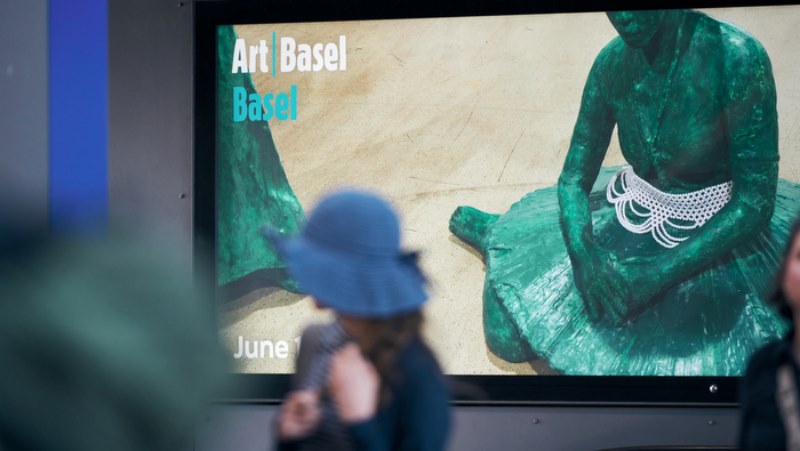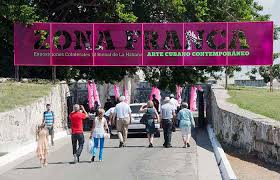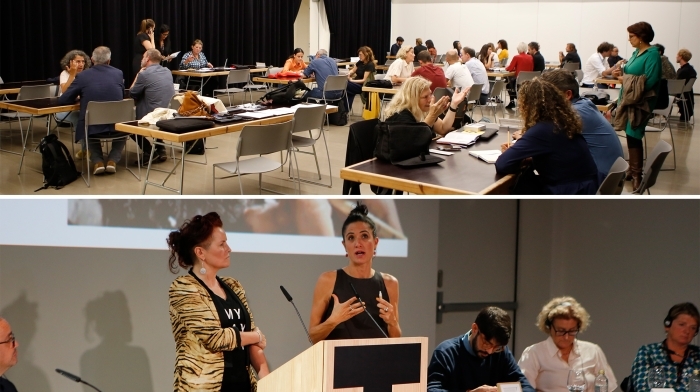By: Clotilde Serrano
The mega-exhibit of contemporary Cuban art Zona Franca, shown at the Morro-Cabaña complex and main collateral exhibit of the 12th Havana Biennial, can be considered an unprecedented event. White and magenta flags, and black and magenta posters, with an attractive design, announce all around the city the path of this big exhibit, that gathers 240 artists, under the general curatorship of Isabel Pérez.
But the privilege and concession that gave the main idea for the selection of the works created by our artists in the last decade – including those conceived for this Biennial – shows us the lines of work the Cuban visual arts has developed in recent years.
Zona Franca, a creative diversity that goes from the most varied discursive tendencies and formats, includes the work of all the provinces of the country, and shows the art of different age groups – with the intention to offer complex and plural visions of our environment and of what happens beyond the boundaries of our country.
Isabel Pérez has reiterated that the concept under which this mega-exhibit was created takes into consideration the profiles our artists have created on history, identity, individual and collective memory, current problems of communication and lack of communication between people, insularity, and even the difficulties contemporaneity faces.
Over 110 artists show their personal works there, while over 20 take part in collective exhibits. No doubts, Zona Franca is a project to keep track of, and to be appreciated with a plural and unprejudiced vision. It’s not just something to watch and let go. Time and careful observation are needed to fully appreciate it.
The Morro-Cabaña complex has been used in previous biennials as the main exhibition hall, and though the spaciousness of its sections and the charm of the place are an advantage, its remoteness from the city and the impossibility to get there immediately are a disadvantage. The creation of a transportation service to get there, something that is done during the Book Fairs, would have been an effective solution for a higher number of people to enjoy the best of the visual arts in Cuba today. For that reason, this mega-exhibit, that has needed a mega-effort on the part of the organizers, has not counted on the expected attendance because of the access difficulties.
That is a real shame because it would be worthy to know where the contemporary art Hecho en Cuba (Made in Cuba) is going to. The possibility of the visual arts artists from other provinces to break with the geographical fatalism that sometimes prevents their works from being appreciated outside their borders – while providing a deserved space for young creators to show their talents – is an opportunity the project Zona Franca has given during the 12th edition of this Biennial.
A sense…
There are no inaccuracies in the face of so many works. The curatorship is well done: nothing is out of place; everything flows naturally, and that helps value the content of the works.
A well-structured graphic design promotes the exhibit throughout the city, and renowned personalities are part of this, including recent National Award winners Eduardo Ponjuán and Lázaro Saavedra. Other figures, like Ernesto Rancaño, Esterio Segura and Roberto Diago, together with representatives of the previous generation, like Roberto Fabelo, Nelson Domínguez, Manuel López Oliva and Lesbia Vent Dumois, share the scenario with a young generation that includes Sandra Ramos, Iván Capote and Abel Barroso, to mention a few.
Zona Franca allows making comparisons, judgments, and also following the path of the Cuban-made arts. Different generations live together, and also different tendencies, styles and formats – something that allows a plural approach to the way visual arts is being made in recent years. From the magnitude of its vision, Zona Franca summons to create the contemporary arts museum that we still lack today.
Source: Cubarte
Related Publications
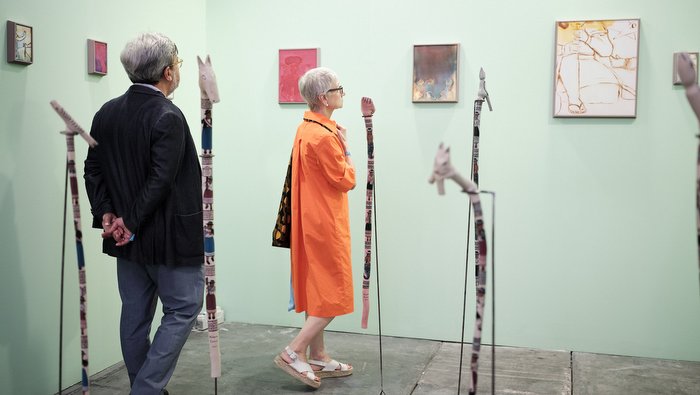
Apply now to Swab Barcelona
April 22, 2024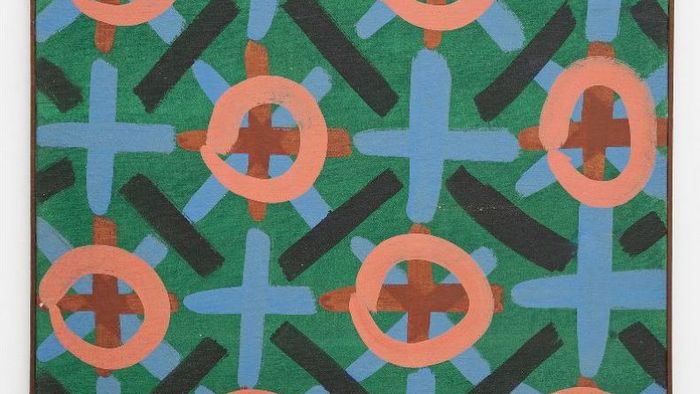
Waldemar Cordeiro: La Biennale di Venezia
April 16, 2024